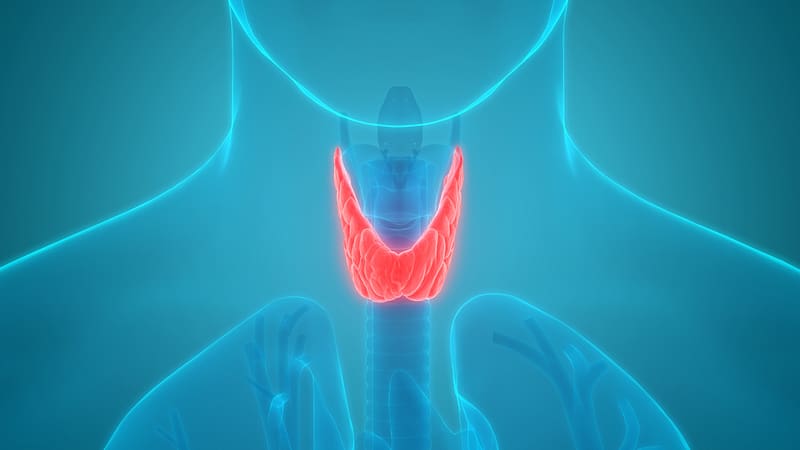“The best advice I ever got was that knowledge is power and to keep reading”.
-David Bailey
What does this quote have to do with Thyroid metabolism and Thyroid metabolites? Directly, not a lot. Indirectly—a whole lot. I believe this quote points to an often unrecognized problem that permeates under the surface of medicine today–an ever prevalent problem, but a never visually evident problem. The average physician lacks a current, working knowledge of scientific evidence due to a lack of reading. How can this be? We physicians get caught into a trap. We spend the better part of 12+ years in higher education (when you count college, medical school, and medical residency). Once completed, there is a sense of accomplishment that cripples most physicians. The volume of knowledge learned leads to the conclusion that there is little left to be learned. This thinking permeates the medical community and it breeds complacency. This complacency leads to a no-growth curve in the average physician’s knowledge. Without daily reading, new discoveries and new knowledge will quickly bypass the average physician leaving the average physician practicing far behind the current science.
Most are aware of the Institute of Medicine (IOM) article that I have previously referenced. This 2001 article highlights that the average physician is practicing at a level that is 17 years behind the current science and “and even that application is highly uneven”. Translated–it is worse than 17 years. This reminds me of a recent conversation that I had with a physician over breakfast that highlights this point. This good physician was responsible for 4 clinics in a town. He would see patients in one clinic and was the collaborating physician for 3 other clinics run by Nurse Practitioners. Between the 4 clinics, this physician was responsible for approximately 125 patients seen daily 5 days a week. That equals 625 patient visits in a week. In our conversation over breakfast, the topic of my knowledge of recent data was discussed. This physician asked how I found the time to read. I told this physician, I scheduled it and made it a priority to read 3 articles a day. When I asked him about his reading, his response was “I haven’t found the need to read an article in 25 years”. Here is a good physician that is responsible for 125 patients a day and 625 patients a week that hasn’t “found the need to read” a medical article in 25 years. The IOM article referenced above points to 17 years as the average physician to scientific data disparity. This physician was practicing at a level of evidence somewhere around 25 years behind the current science. As the IOM conclusion stated, “…and even that application is highly uneven”.
To put this time into better perspective, let’s look at some real life examples. Can you imagine life without a smart phone? Whether you are an iPhone, android, or blackberry lover (sorry if I left out anyone), can you imagine life without your smartphone? The first smart phone hit the commercial market in 1993. That was 20 years ago. The first smart phone is really not the smart phone of today. So lets look at a more relevant example—the modern day smart phone. I am an apple guy, so I will use this as my modern day smart phone example. The first iphone was introduced at MacWorld in 2007. That was < 10 years ago–so less than the 17 years. Now, our smart phones track us. Our phones can predict our behavior and make recommendations based on our prior history. We no longer require large memory because we store data in “the cloud” somewhere. We even talk to our phones and our phones even talk back (why do we want something to talk back to us when our kids already do that?). All that advance and progress in under 10 years! The average physician works on a knowledge that is 17 years behind the current time and the physician that I had breakfast with, at the time, worked on a knowledge that was 25 years behind the current time.
To compare apples to apples, let’s go back 25 years in the life of the portable phone example used in the prior paragraph, because < 10 years wasn’t enough. The year was 1989. I had just graduated from high school and I was a freshmen in college. Beepers were all the craze. The first apple laptop had just been introduced in September of 1989. Cell phones were a relative unknown—think about that for a moment. The modern day cell phone was introduced only 20 years ago, let alone the smart phone. Car phones were the extent of phone portability. There was no texting, no social media, no pictures, no videos—it was simply a phone. This phone was the size of a briefcase that was installed in a car. No option(s) were available to purchase the car with the phone; the phone had to be added. The phone was simply an after thought. The only thing mobile about it was the fact that it moved with the car.
Then there is the laptop. Remember the 25 year time lapse? Can you imagine life without a laptop? There are those that say the commercial lifespan of the laptop has come and gone in less than 25 years.
Can you imagine life without your smartphone? Can/could you imagine life without your laptop?
Can you imagine practicing medicine on this same time table. Worse, can you imagine receiving medical care on that time table? Yet that is what we have today—or at least in 2001 and “even that application is uneven”.
Similar examples abound in medicine. Hormone Replacement therapy (HRT) is a great place to look. In medicine, History has a way of Repeating Itself. Twenty-five years ago, HRT was simply Premarin or PremPro for women and Low T for men had yet to even hit the marketing airways (can you imagine?!). Premarin was the #1 prescribed drug in the United States in 1992. The #1 status of Premarin seems a distant memory, but it was only 22 years ago. Viagra hadn’t even hit the American markets. Viagra hit the commercial markets in 1996—just 18 years ago. Can you imagine a televised sporting event without a Viagra or Cialis commercial? Seventeen years in medical research and discovery is an eternity and 25 years is well…—“to infinity and beyond”. But, unfortunately for most physicians, infinity and beyond is a far to common place to rest.
What is this history connection to Thyroid metabolism and Thyroid metabolites? Knowledge is the connection-the presence of knowledge versus a lack of knowledge.
A recent communication I received highlights this lack of knowledge in the face of the scientific presence of knowledge in Thyroid metabolism and Thyroid metabolites: “there is no clinical usefulness or science to support the evaluation of free T3 and reverse T3”. Free T3 and reverse T3 are Thyroid hormones that will be discussed in greater detail below.
To support the author of this statement, there needs to be an absence of scientific data on free T3 and/or reverse T3 (rT3). Unfortunately for the author of the statement, there is a significant volume of literature to support the exact opposite (see just a sampling below). One can only know this knowledge of Thyroid metabolism if one reads. This does not include the reading of published opinion statements, but an actually reading/working knowledge of the science.
Before we review just some of the evidence on free T3 and rT3, what does the evidence show on Thyroid metabolism?
To understand Thyroid metabolism and Thyroid metabolites, we have to go back to the beginning. Thyroid begins with the Hypothalamus. The Hypothalamus is a region in the brain that is the origin of many hormones. The Hypothalamus is responsible for the secretion of Thyroid Releasing Hormone (TRH). Thyroid Releasing Hormone stimulates the nearby Pituitary to secrete Thyroid Stimulating Hormone (TSH). See the image to the left for a visual. The image also highlights the negative feedback by T4 and T3 at the level of the Pituitary and the Hypothalamus. Both TRH and TSH are in fact Hormones, but they are not “the” Thyroid hormones that stimulate metabolism. Thyroid Stimulating Hormone stimulates the Thyroid gland to produce and release Thyroid hormone. The primary product of the Thyroid gland is T4. The production of T4 is important, but T4 is merely just a pro-hormone. T4 has biological activity, but it is just a step away from the big show. The big show is T3. When people speak of the biological effects of Thyroid hormone, they are referencing T3. The T3 hormone is the only hormone that enters the cell. An expert in Iodine and Thyroid physiology, Dr David Zava, once said “T4 never enters the cell”. T4 is the most biological present Thyroid hormone, yet the weakest Thyroid hormone. In contrast, T3 is the least prevalent Thyroid hormone, yet T3 is the most potent Thyroid hormone. The potency of T3, as defined by the affinity for the Thyroid hormone receptor, exceeds that of T4 by a rate of 3:1. Translated: if T3 and T4 are present and Thyroid hormone receptors are present, T3 will win almost every time. The Thyroid hormones T4 and T3 are both produced in the Thyroid gland, but the majority of T3 production occurs at the sight of action (peripheral tissue outside of the Thyroid) from the pro-hormone T4. But this over simplifies what actually is occurring in the Thyroid gland. So let’s look a little deeper into Thyroid physiology.
Where does T4 come from? Other than the Thyroid gland that is. It all begins with the amino acid Tyrosine and the element Iodine. Thyroid hormone production begins with the Thyroid gland and the uptake of the amino acid Tyrosine. At the same time Iodide (I-) is taken up by the Thyroid gland and then coupled together to form Iodine (I2). Iodide is then attached to Tyrosine via the enzyme Thyroid Perioxidase (TPO). Those with Hashimoto’s Thyroiditis know TPO well as this is the enzyme that the immune system attacks in this autoimmune Thyroid disease. The coupling of Tyrosine and Iodine result in the production of the Thyroid hormone precursors monoiodotyrosine and diiodotyrosine which eventually leads to the production of T4 which is Tyrosine with 4 molecules of Iodide attached. Once made, the Thyroid gland stores the T4 to await the signal for release.
“The essentials of the Thyroid hormone is the delivery of Iodine to the tissue” (Dr Zava). Remember the earlier quote—“T4 never enters the cell”? The pro-hormone T4 is just a step to the more potent Thyroid hormone. The pro-hormone T4 is transported to the target tissue. I don’t mean to imply that T4 has no activity. Though T4 is a pro-hormone, it does have weak biologic activity. Once T4 reaches its target tissue, T4 is converted to T3 and Iodine is released to the tissue. The T3 Hormone is the Thyroid hormone that stimulates metabolism. The T3 hormone has 10 X the potency of T4. The prestigious textbook Clinical Gynecologic Endocrinolgy and Infertility states that “80% of the T3 generated is derived outside the Thyroid gland”. The potency and peripheral metabolism of T3 brings into question the use of a limited evaluation (TSH and T4 only) and of T4 therapy alone (synthroid, levothyroxine). The use of T4 therapy alone assumes that the conversion to T3 is efficient and unhindered and that rT3 production is low. Why limit the evaluation to the precursor T4 and not the drivers of metabolism, T3 and rT3? A question that I am sure you asked and a good question. A question, unfortunately, for which I have no good logical answer. The science simply does not support a limited Thyroid assessment and/or T4 only therapy. Notice I said science and not opinion, because the Thyroid metabolites, which happen to be Thyroid hormones, are ignored. Just because we may ignore them, does not mean the body does.
To improve our working knowledge of Thyroid metabolism, lets take another step deeper. How is T4 converted to T3? The enzyme deiodinase is responsible for the conversion of T4 to T3. Specifically, the type I deiodinase (D1) and type II deiodinase (D2) enzymes are responsible for the conversion of T4 to T3. The type I deiodinase is responsible for T4 to T3 conversion throughout the body and type II is responsible for T4 to T3 conversion in the pituitary. A great review of Thyroid metabolism can be found at the National Academy of Hypothyroidism. This conversion enzyme requires the cofactors Zinc, Selenium, Chromium, and Iodine for proper function. Iodine deficiency can have a both a central and a peripheral inhibitory effect on Thyroid Hormone production and function. Additionally, the heavy metals Lead, Mercury, Arsenic, Cadmium, and Aluminum inhibit the function of these enzymes. In contrast to the type I and type II deiodinase enzymes, the enzyme type III deiodinase (D3) enzyme converts T4 to the Thyroid hormone reverse T3 (rT3). Reverse T3 is the inactive, mirror image of the Thyroid hormone T3. In contrast to the potent activity of T3, the rT3 Hormone is inactive. In addition, rT3 has a higher affinity (3 x) for the Thyroid hormone receptor than does T3. Basically, reverse T3 is the evil, lazy twin sister of T3 that never leaves.
The quote by the physician above referenced rT3 and free T3. To be fair to this physician, what does the evidence say specifically about rT3 and free T3? Is there any evidence? But of course there is. Reverse T3 has been shown to be valuable in assessing mortality after a myocardial infarction. That is useful. Elevated rT3 levels are found in those with Diabetes and Cardiovascular events. Reverse T3 levels have been shown to be useful in determining the prognosis of patients with Congestive Heart Failure. Finally, rT3 levels correlate with depression and other affective disorders. These are just a few examples of the data support for rT3.
What of free T3? Any evidence there? Free T3 levels have been shown to be inversely correlated with coronary artery disease (CAD). Translated—low free T3 levels equal increased CAD. In addition, Lower free T3 levels (bioavailable) have also been associated with increased mortality in hospitalized cardiac patients and has been shown to be “a strong independent, predictive marker of poor prognosis in cardiac patients”. Together, the free T3:rT3 ratio was the only Thyroid parameter (TSH, T4, free T4, free T3, rT3 included in the study) evaluated that predicted outcome in those with Heart Failure. So, here is a study that states the only valuable, predictable Thyroid Hormones are free T3 and reverse T3.
A complete picture of Thyroid metabolism presents a triad of Thyroid hormones (T4, T3, and rT3) controlled by the expression/activity of the different deiodinase enzymes, effected by the minerals Zinc, Selenium, Chromium, and Iodine. More important than that–a complete Thyroid assessment is supported in the science. These Hormone pathways are not static, but very fluid. The figure to the right reflects the Thyroid Hormone biochemistry reviewed above. Many focus on the importance of the Thyroid hormones. That view is narrow and static. The arrows reflect the balance and activity of the different deiodinase enzymes. As important as the Thyroid hormones are, the arrows in the figure below are, I believe, more representative of the fluid, dynamic balance that is Thyroid metabolism.
This complete Thyroid biochemistry picture begs many questions to be considered when evaluating the Thyroid:
- Which way is the body’s thyroid metabolism moving?
- What is disrupting Thyroid biochemistry?
- How will the body be effected by Thyroid hormone replacement?
The last question is a very important question to ask. As I highlighted above, assuming that T4 therapy (synthroid, levothyroxine) will drive proper Thyroid metabolism (free T3 and not rT3) is devoid of an understanding of proper Thyroid metabolism as defined in the scientific literature.
Let’s come full circle to the statement: “there is no clinical usefulness or science to support the evaluation of free T3 and reverse T3”. Is this true? Is this false? To answer these questions, we must read to obtain the power of knowledge. I already presented data above that supports their link to disease and disease prognosis. Is there more evidence and what does the evidence show? To follow the quote that this blog started with—lets do some reading. Previous paragraphs highlighted the evidence for free T3 and rT3 in disease. Hungry for more? Below are additional studies for reading to improve knowledge on Thyroid metabolism and Thyroid metabolites.
The studies listed above, all discuss the complex physiology of T4, T3, rT3, and the different Thyroid hormone balance as dictated by the different deiodinase enzymes as I briefly reviewed above. These studies are a mix of recent publications and more distant publications. In addition, these studies come from highly respected Endocrinology journals–no opinion statements.
This again brings me to the statement: “there is no clinical usefulness or science to support the evaluation of free T3 and reverse T3”. This statement is not supported in the scientific literature as I documented above. How could a medical provider not know this? How could one agree with the statement that free T3 and rT3 provide little to no clinical evaluation? The simple answer is they don’t read. The power of knowledge comes through reading.
Why don’t they read? I quit asking myself that question a long time ago. I just keep reading.
Would you like more information? Get in touch with us today!







